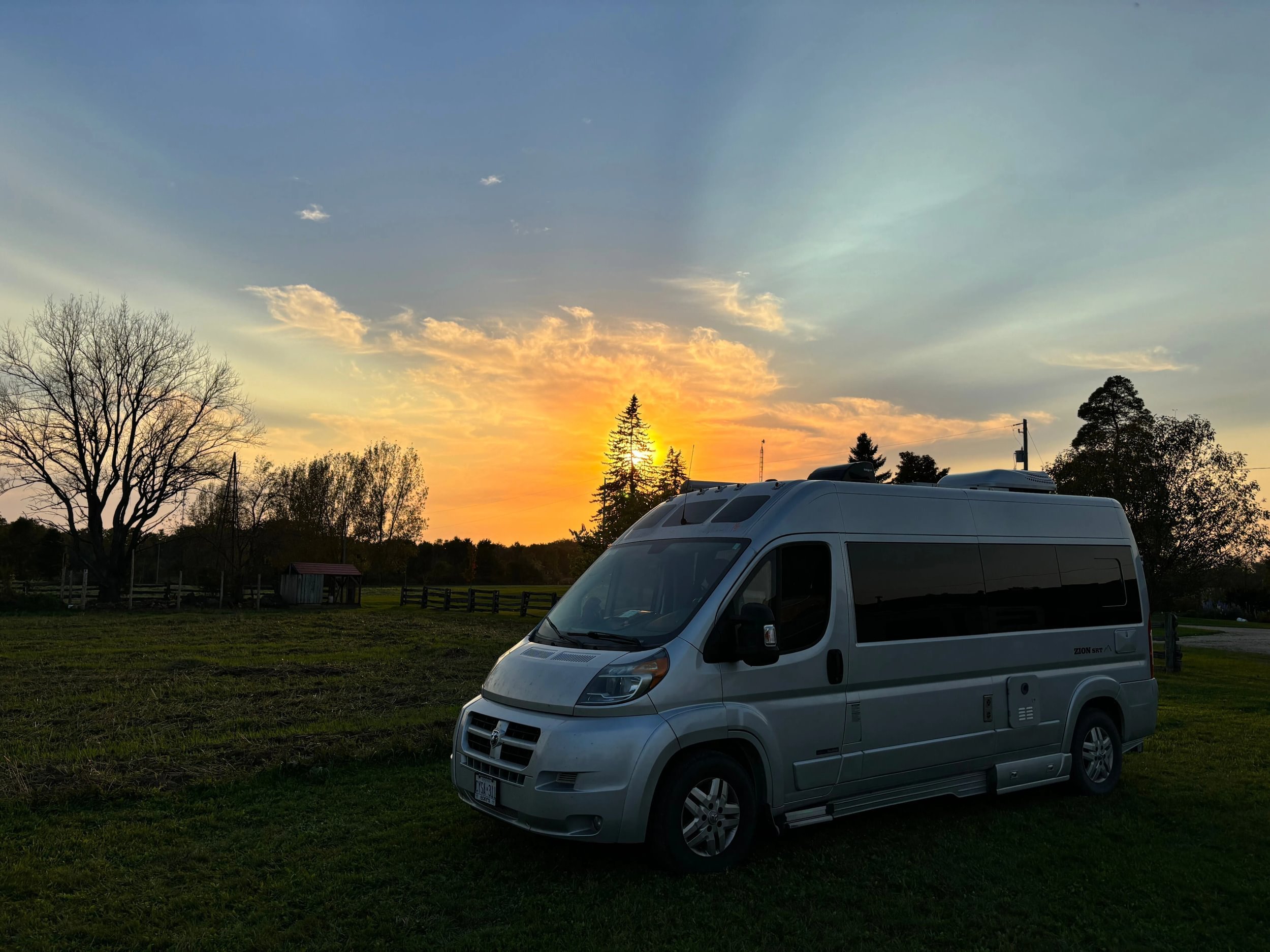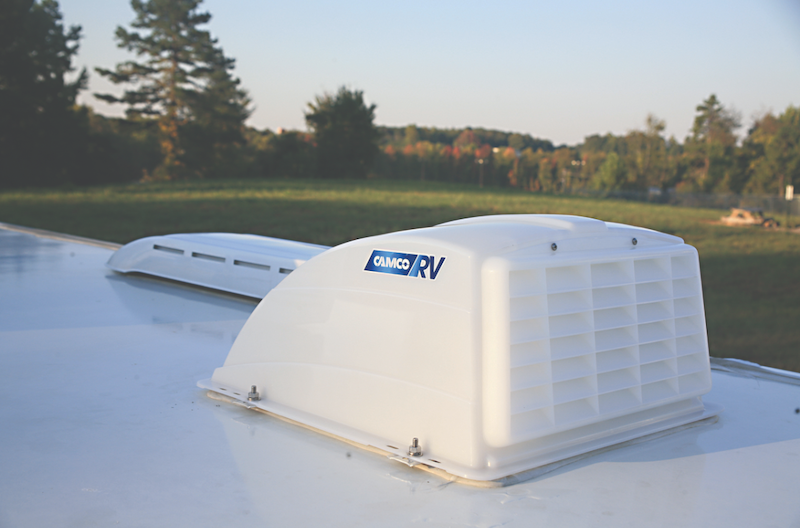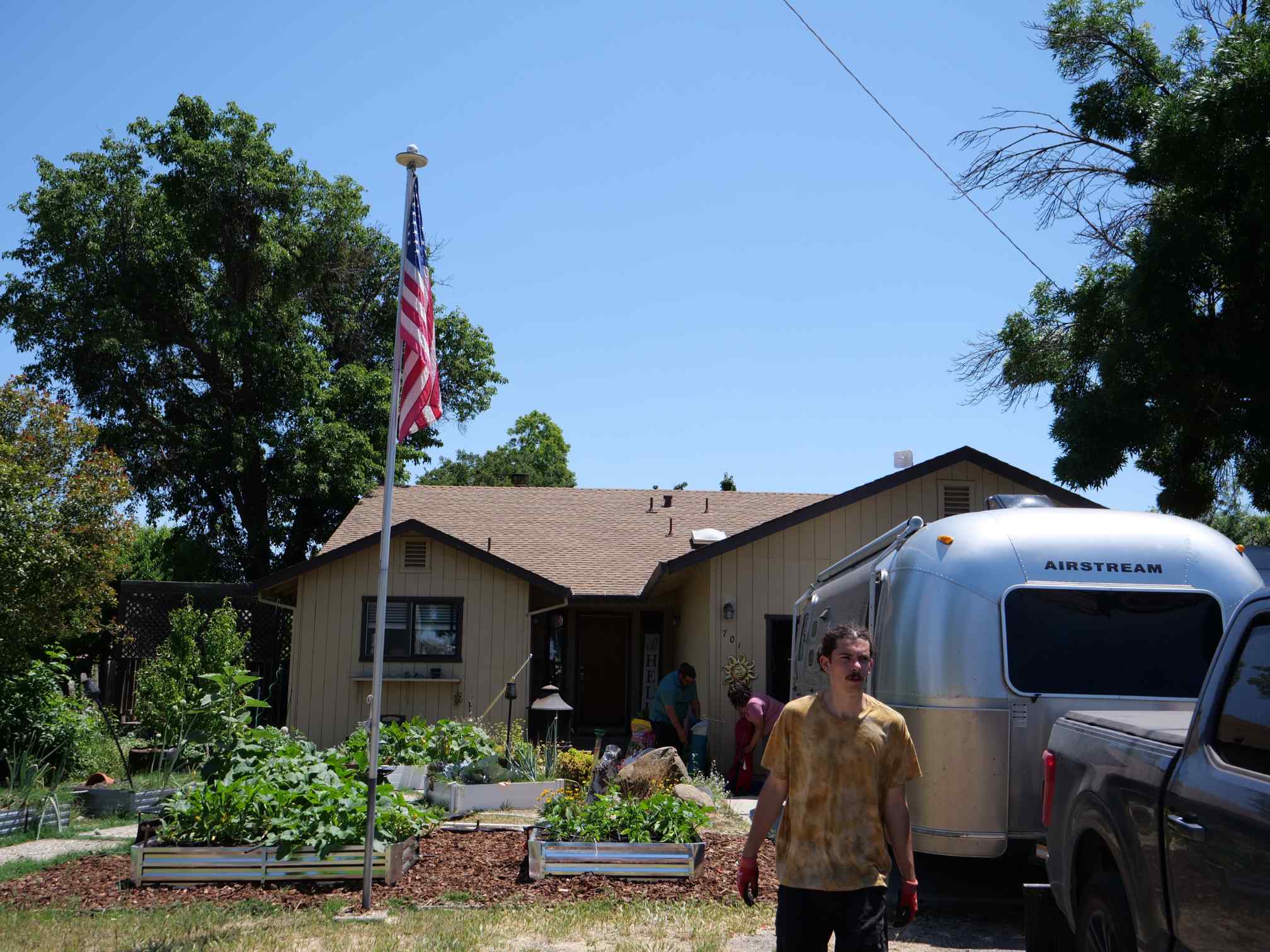Debunking Boondocking Myths, Part #1
Myth #1: It’s free and you get what you pay for.
That’s only true if you actually want the amenities that a paid-for campground or RV park offers.
But there’s another difference between campgrounds and boondocking that we, like many RVers, enjoy even more than saving money.
This is boondocking.
This is the view from our patio doors when we boondock:
This is the view from our patio doors in a typical $30.00 per night campsite:
Myth #2: If too many people use the best legal boondocking spots on public lands, they’ll close them down.
We’ve been boondocking on America’s public lands for 18 years – mainly in National Forests and BLM land in the southwest. We’ve found hundreds of great boondocking sites and have returned to them time and time again. Over the years, we’ve seen the rules change so that overnight parking is now prohibited – but only at a handful (maybe 5 or 6) of those spots. In every case, we suspect one of two reasons for the policy change:
- Repeated abuse by campers who ignore fire regulations and stay limits, dump garbage, or engage in other illegal activities.
- Pressure from private interests, especially in popular tourist areas. A prime example is a change in Coconino National Forest near Sedona, AZ. (This is my presumption; official representatives would not provide a reason when asked.)
Myth #3: You can’t find legal boondocking in populated states like Florida.
You can. As this youtube video from SimplyRVing shows, you just need to look a little harder.
While the most populated states may not have options on public land, websites like Boondockers Welcome and Harvest Hosts give RVers more opportunities than ever to boondock on private land.
Myth #4: You’re not going to feel safe if you’re boondocking.
Perhaps. But, in most cases there’s a cure for that. It involves 3 steps:
- Hearing about other’s experiences and taking comfort in their recommendations.
- Experiencing boondocking in remote locations first hand without incidence.
- Thinking rationally about your fears and what really is behind them.
Like everyone new to boondocking, when we started, our biggest fear was the unknown. I’ve been debunking this myth and offering common-sense advice for your boondocking safety for over 10 years now at frugal-rv-travel.com.
Myth #5: Leaving your rig unattended is riskier than in a campground.
First of all, most thieves are lazy. They want easy, sure opportunities and aren’t likely to drive down a remote dirt road just in case they may come across an unattended RV. Most people would think nothing of building an expensive home or cottage in a remote area, where thieves can stalk the place to figure out when the occupants are likely to be absent. Why be afraid to leave an RV in a similar location?
Although the majority of campers are honest nice people, even if we’re camped in a “secured” campground with other campers all around, it doesn’t mean there isn’t a thief amongst us or that we’re safe from a break-in or robbery.
In many boondocking situations, there are other RVers set up at a respectful distance but within view, willing to keep an eye on any activity near each other’s rig. In a crowded campground, there can be so much activity that it may not be noticeable when someone who doesn’t belong there is too close to your unit.
Myth #6: You’ll need to spend quite a lot of money to equip your RV for boondocking. It’s costly to add solar, a generator, or both.
Almost all RVs are built for boondocking – camping without hookups – for at least a day or two at a time. Longer if you can conserve your resources. If RVs were built to only use campgrounds with hookups, manufacturers could cut a lot of corners (something we know they’re good at) by not including holding tanks, a 12-volt system, propane appliances, deep cycle house batteries, and built-in generators).
We’ve managed to enjoy extended boondocking numerous times for 5 to 6 days at a time without solar or a generator. Yes, we had to conserve power and water to do it, but it was not a real hardship and certainly far from impossible.
Technological advances have increased solar options in the last few years, while at the same time reducing the cost. For one of our trips, we built our own small portable solar panel for less than $200. It gave us the extra juice we needed (mostly just to keep my laptop charged so I could blog). Entry-level portable generators are available at a similar cost. If you’re serious about extended boondocking, you’ll probably want to spend more. In that case, the sky’s the limit.
Check back soon for Part 2, dispelling more boondocking myths.
Learn More About Boondockers Welcome
We promise not to spam you!








The saif ul malook hotel naran by Nawabs Hotels and Resorts offers a tranquil haven. Our hotel, that hides away amid breathtaking scenery, has opulent lodgings and first-rate amenities. Discover the perfect blend of luxury and environment, ensuring that your stay at Saif Ul Malook Hotel Naran is one to remember.
Discover effective osteoporosis treatment at Shalamar Hospital. With advanced therapies and expert guidance, we tailor treatment plans to your needs. Trust us for comprehensive care and support on your journey to bone health and overall well-being.
Uniswift.ae is your ultimate destination for soccer kids. From balls to jerseys, we have everything you need to make the most of your playing experience. Shop now and elevate your game!
Osh University is a distinguished International medical degree, known for its commitment to advancing healthcare education and research on a global scale.
服务质量保障是经济学网课代上 http://www.wangkedaixiu.com/wkds/jjx/ 服务的核心问题。学生选择代修服务,主要是期望获得高质量的学术支持。然而,代修市场鱼龙混杂,一些不良机构和个人提供的服务质量低劣,甚至存在欺诈行为。这不仅使学生的学术成绩受损,还可能导致更严重的学术后果。为了保障服务质量,代修机构需要建立严格的写作和审核流程,确保每一项任务都能按时高质量完成。此外,学生在选择代修服务时,也需要进行充分的调研和评估,选择信誉良好、专业性强的机构,以减少服务质量问题的发生。